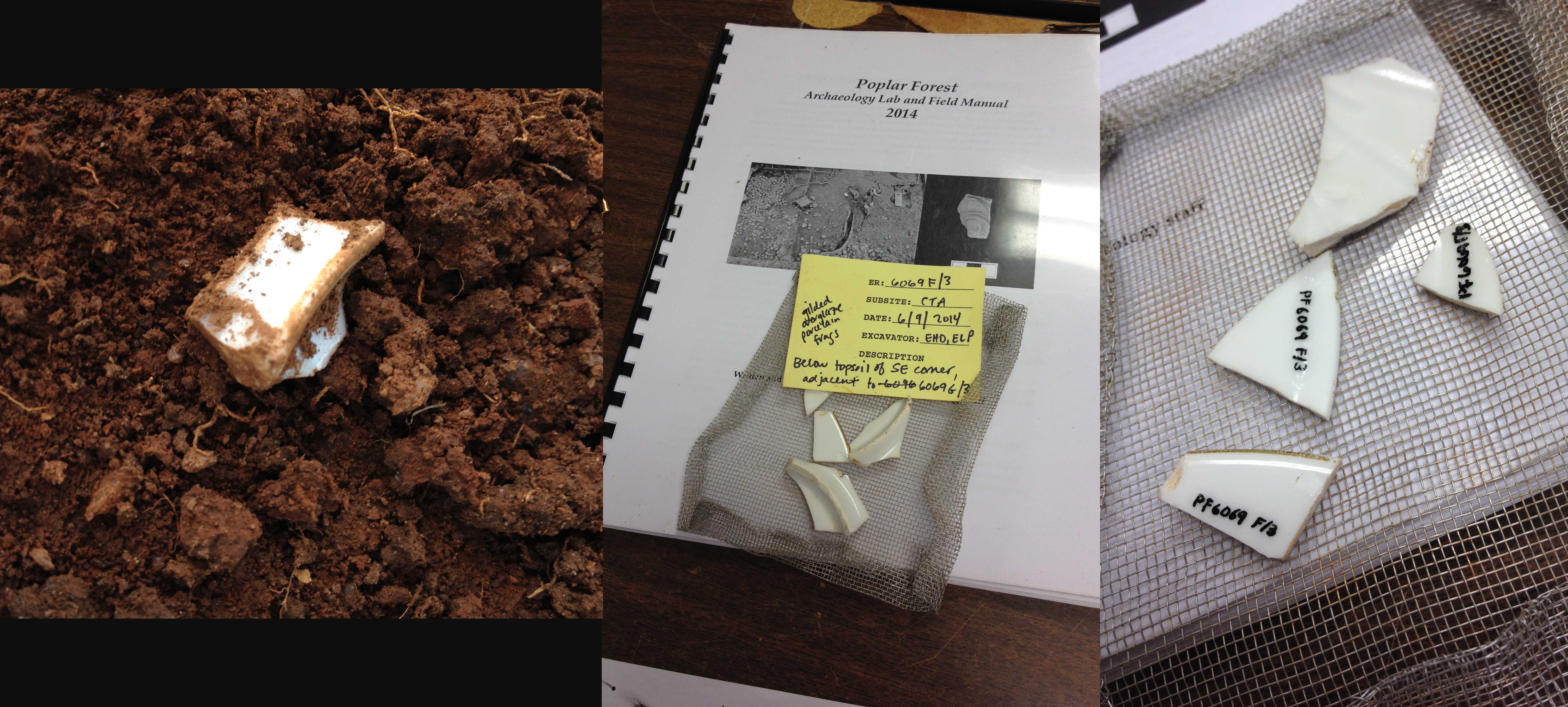Archaeology Blog
Field School Week 4
By: Ryan Hodges
Field Work:
As we continue to uncover more of the carriage turnaround we are revealing much more of the area where we may potentially be able to see the curvature of the circle. We have opened up a great grouping of four units in the central part of the turnaround, toward the northern area of the center. As a group effort these units are being unearthed all at once. We have found many nails, fence staples, and some ceramics. We also came across a coin dated to 1895, which was in keeping with the layer that we were excavating at that time. More cobble stones continue to appear in these units as well, helping us to further understand what the turnaround looked like. As we continue to excavate, we begin to piece together this very large puzzle to see the dimensions of the turnaround.
Thursday proved a really productive and exciting day in the field. Interestingly, there are many bricks in the new set of units in the center of the carriage turnaround. Some of them are irregularly shaped, and more excavation is needed to understand what the bricks can tell us about the turnaround. The progressing layers in these units have yeilded some porcelain and what appear to be flow blue sherds. We have also found a piece of a parasol rib! The artifacts coming out of these 4 units are continuing to match the right time period of the layers as we excavate deeper. All of these findings are quite exciting and a bit puzzling at the same time! We intend to determine how these bricks and artifacts tie into the structure of the turnaround.
Lab Work:
This week in the lab we have been labeling artifacts and practicing our crossmending skills, along with learning how to calculate a mean ceramic date and interpret Harris matrices. Labeling the artifacts is a task that requires a steady hand in order to mark each individual piece to know which unit and layer it came from. Crossmending is where the sherds that are found from excavation are put back together to form their original vessel. While many pieces are often missing, what we are able to put together can show a more holistic view of what the vessel may have looked like. It is like doing a really difficult puzzle with many pieces, and you don’t have the top of the box to see what it all looks like! The mean ceramic date (MCD) helps archaeologists calculate a mean date for ceramics of a historic assemblage, and the Harris matrix is a form of organization of the stratification of the layers of soil. Both are very important to interpreting an archaeological site.
Historic Sandusky Visit
This week we also had the pleasure of being able to visit Historic Sandusky plantation in Lynchburg. The property has a lot of history that is in line with that of Poplar Forest, including the property being owned by the Hutter family. We were able to take a look at what they are working on, particularly their endeavors to find an enslaved laborer kitchen. We had a fantastic tour of the house, and got to catch up with what their field school is currently working on. A big thanks to Lori Lee, the Sandusky staff and the Sandusky field school for a great visit!
Be sure to check back for further blog posts, as our field school only has two more weeks!


